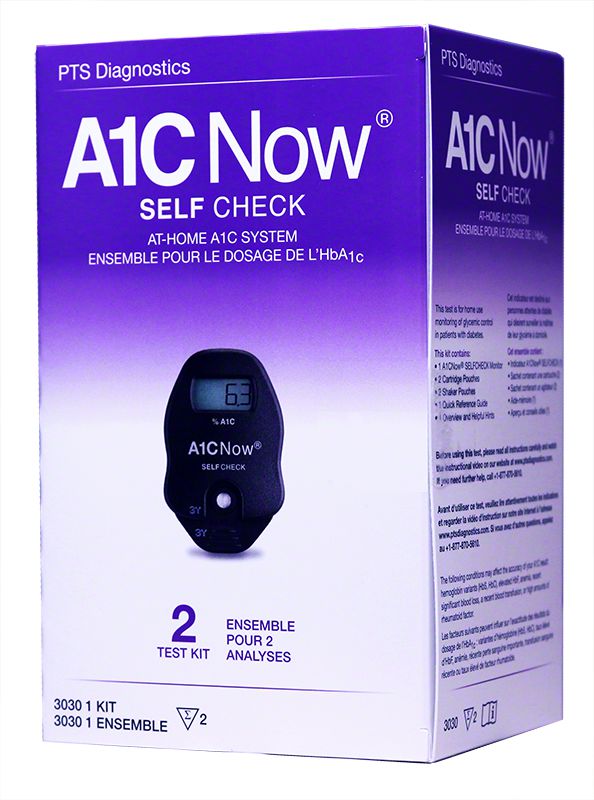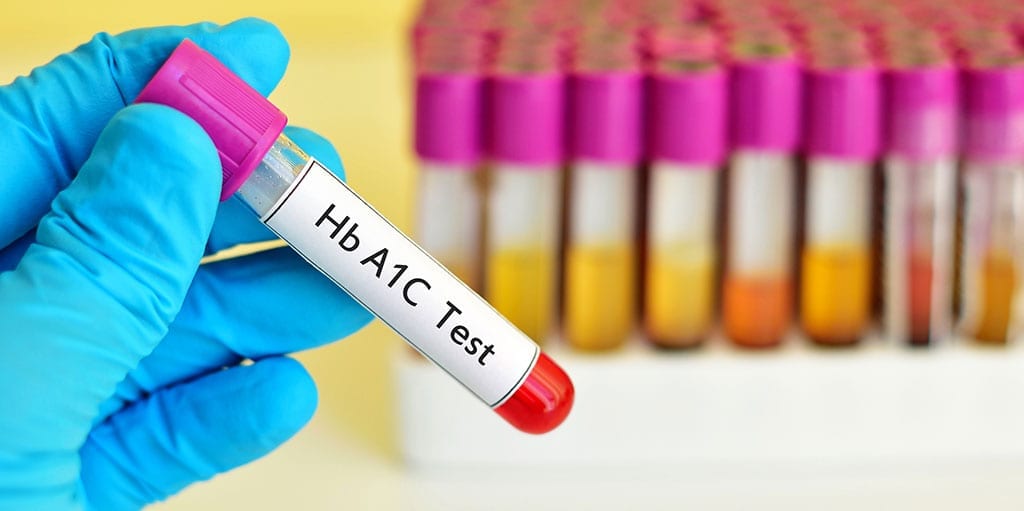A new study done on over 7,500 patients showed, “the higher the A1C level in patients with diabetes over age 54 that were admitted to the hospital for surgery, the more complications, the longer their stay in the ICU, the longer the overall hospital stay ,the higher the need for mechanical ventilation or breathing tube insertion and a higher risk of mortality in the 6 months after hospitalization.” This study shows us how critical the A1C value really is.
What is Diabetes?
Diabetes is defined as, “an inability to produce or respond to the hormone insulin.” Diabetes requires multiple physician visits to a variety of medical specialists, along with a tremendous amount of self-care, discipline and motivation. Periodically, your main physician, whether it is an internist, family practitioner or endocrinologist, will require blood tests to be checked along with blood pressure readings and complete foot checks to monitor your health. The blood tests ordered are recommended by the American Diabetes Association (ADA) to establish quality of care for you, the patient. You will be required to have blood and urine testing. The blood tests should include a fasting glucose, an A1C test which covers blood glucose control, urine albumin, blood creatinine and GFR which covers kidney function, lipids, triglycerides and inflammatory markers which covers cardiovascular health. Along with your health care provider, you need full access to these results and should completely review them, as a team. Always ask for a copy of your blood work and keep it in a file which holds all your various medical encounters.
The A1C, Other Blood Glucose Tests and Other Necessary Tests
The hemoglobin A1C (glycolated hemoglobin/HbA1C) had been used to track longterm control of blood sugars in people with diagnosed diabetes. To decrease confusion, The American Association of Clinical Endocrinologists and The American College of Endocrinologists shortened the verbiage to just “A1C” in 2001. In 2010, the ADA approved the A1C test as a diagnostic tool stating, “a level of 6.5% or higher was a diabetes diagnosis.” The A1C test is now a true and important diagnostic test for people with diabetes or people who may be at risk for diabetes. An A1C value of 4.5-5.6% is considered normal, a level of 5.7-6.4% is considered pre-diabetes and 6.5% or higher is considered diagnosed diabetes. Other ways to diagnose diabetes are checking a fasting blood glucose test where the results of 126mg/dl two times in a row is diagnosed diabetes, or a glucose tolerance test where 200mg/dl or above 2 hours after ingesting a 75-gram glucose solution is diagnosed diabetes. An A1C test measures the Average Blood Glucose (ABG) in the body over the previous 90-120 days. Daily monitoring is a “snap shot” and the A1C is “a long, exposure photo or video.” Although monitoring your own glucose levels at home daily with a glucose meter is crucial for understanding how to eat, how much sleep is required, getting the right amount of exercise, identifying infections or illness and dosing insulin, an A1C test complements self-monitoring by offering a more complete picture of how your treatment program is performing over the long term. Since heart disease is the leading cause of death in people with diabetes, lipid and triglyceride blood values should also be checked. The HDL or healthy cholesterol should be at least 40mg/dl in men and 50 mg/dl in women. Exercise helps raise HDLs. The LDL should be below 100mg/dl. Diet can influence LDLs, but genetics can too. You may require a statin drug to bring down LDLs, so check with your doctor. Your triglycerides should be below 150 mg/dl and may be elevated when your blood sugars are uncontrolled. To lower triglycerides, lose weight, get blood sugars under control, exercise, cut out sugar and add Omega 3s-fatty fish or flaxseeds, to your diet. Kidney function should be checked with blood work at least consisting of creatinine and GFR and a urine test for albumin. Albumin is a protein found in the blood and when kidney function is reduced and can dump into the urine causing proteinuria. Normal levels of albumin are less than 30mg/g. GFR blood levels are normal at 90 and considered kidney failure at 15 or less. Creatinine blood levels are normal in men at 0.6-1.2 mg/dl and in women at 0.5-1.1mg/dl.
Testing Your A1C Levels
The A1C test gives important information about your blood glucose control over 3 months. Hemoglobin is an oxygen-carrying protein found in red blood cells. Red blood cells live for about 120 days and then are replaced by new ones. Each red blood cell carries a “memory” of daily blood glucose levels throughout its lifetime. When surplus glucose is in the bloodstream, it hooks up with hemoglobin, causing higher A1C levels. Once they are hooked up together, they stay hooked up. These A1C levels are “remembered” by the red blood cells and can be analyzed by an A1C test. Specifically, the A1C test shows whether your ABG is above normal by measuring the percentage of glycated hemoglobin. You do not need to fast for an A1C, since it is an average of 3 months. In a non-diabetic person, about 5% of all hemoglobin is glycated (or, attached to glucose). In a person with diabetes, this percentage can jump to anywhere above 6.5%-25% in extreme cases. The A1C value is always reported in percentage. The A1C reflects a combination of your fasting glucose level as well as the post prandial, after eating, levels. When too much glucose is in the bloodstream, hemoglobin cannot deliver as much oxygen as is needed by the body’s cells. Without oxygen, the cells suffer damage. Numerous studies have reliably linked above normal A1C results with complications such as nerve (neuropathy), eye (retinopathy), kidney (nephropathy), cardiovascular disease and foot amputation.
When Might an A1C Result be Inaccurate?
There are some cases when the A1C can give inaccurate results. Your health care provider should be the one who decides when a different blood test called a fructosamine, needs to be substituted. Fructosamine measures 2-3-week blood sugar averages. Situations were A1C results may be inaccurate include anemia, sickle cell anemia, kidney disease, recent blood transfusions, iron deficiency, blood hemorrhages, high doses of vitamin C or vitamin E, taking opioids, alcoholism, and taking large doses of aspirin, which may all interfere with glycation.
A1C Results – What to Look for with Diabetes
For years, the recommendation from the ADA was to reach an A1C value of 7% or below for every patient with diabetes. The AACE always recommended an A1C of 6.5% or below. The Association of Family Practitioners have recently raised the desired A1C amount to around 8% for certain patients. The best advice is to work with your health care provider to decide what A1C result is best for you. Usually, young, newly diagnosed patients should be well controlled at an A1C of 6.5% or less. Elderly patients and those with pre-existing heart disease should be allowed to have a higher A1C, up to 8-8.5%. “For every point decrease, i.e. from 12% to 11% A1C, there is a corresponding 37% decrease in microvascular, diabetes complications and a 21% less chance of death from diabetes.” It is still believed that, “the higher the A1C and the longer it stays elevated, the more diabetes complications to the eye, kidney, nerves, feet and cardiac system will be experienced by the patient.”
What About Hypoglycemia?
Maintaining a well-controlled A1C is great for you and your diabetes, but not when it becomes too low as it may increase your risk of hypoglycemia. This is seen especially in type 1 diabetes. If you test daily and often find blood sugars below 70mg/dl, you may need to change your treatment plan after checking with your physician. Symptoms of low blood sugar consist of feeling dizzy, shaky, sweaty, light-headed, having a rapid heartbeat, feeling weak, hungry or having a headache. Hypoglycemia can eventually lead to impaired neurological function, convulsions and a coma if not properly treated. Always be prepared with glucose tablets, either hard or soft, or glucose gels. Follow up with a small snack of a protein and one serving of a carbohydrate such as a small apple with 1-2 spoons of nut butter, if not right before a meal.
Home A1C Tests

Tips to Lower Your A1C
You can get your A1C level down by exercising regularly, losing weight, watching portion sizes, taking your medication as prescribed and on time, testing daily to follow blood sugar patterns, practicing stress management, sleeping 7-8 hours nightly, getting a flu and pneumonia shot, avoiding infections and by counting carbohydrates. Work with your physician, diabetes educator or dietitian for more information about lowering your A1C.
If your diabetes treatment program is still not working effectively, an A1C test may alert you and your healthcare team that further adjustments are needed. Although the A1C test is an important tool for diabetes management, it is vital to emphasize that the test is not a replacement for daily monitoring of blood glucose levels and proper follow-up with your health care provider. Check with your doctor to determine how the A1C test should fit into your diabetes management plan.
NOTE: Consult your Doctor first to make sure my recommendations fit your special health needs.







Leave A Comment